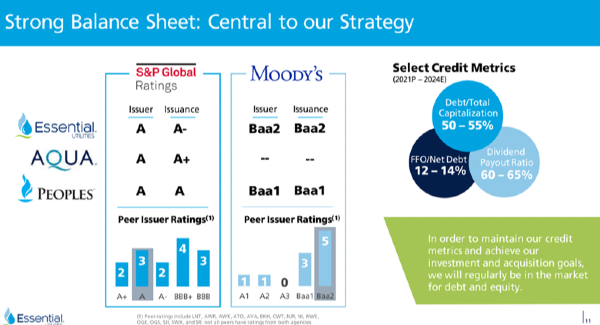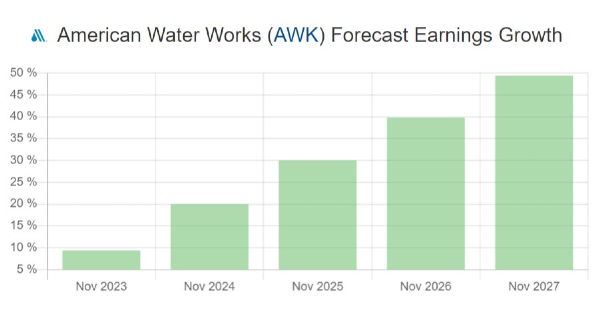Side Gig 2 Main Gig
Turning your side gig into your full-time gig
Actionable Items for You:
- Going from side-gig to full-time gig? Make sure you take care of some administration before you take the plunge.
- When you leave your full-time job, you might need to get your own health and life insurance. Cover all of your options ahead of time. In addition, keep those retirement savings going.
So you are thinking of taking the leap and making your side gig your full-time gig. Congrats! Of course, it can be difficult to make this jump and it is extremely hard to find the right time, especially if you have a family or more people counting on you.
Here are some signs you are ready to make the change:
- You enjoy your side gig more than your 9-5.
- Your side gig is so busy it feels like you have two full-time jobs.
- You can reasonably live on what your business is making right now.
That’s a great start. However, make sure you consider a few things before leaving your day job. Once you’re on your own, you’re going to have to replace those employer benefits, and some of them are extremely important. Here’s a quick checklist:
- Health Insurance: If you are married, maybe you can be added to your spouse’s employer plan. Single? Look into individual plan options (we can help with both of these).
- Life Insurance: Is your employer’s policy portable? Might be a good option. If not, get some term life insurance quotes to replace the coverage you get through your employer. (again… we can help you with this!)
- Retirement Savings: You have to keep your future self’s retirement on track. Keep up your contributions by opening a traditional or Roth IRA, depending on your situation.
Now that that’s all done, a couple of things might help you work smarter, not harder, with your side-gig-turned-full-time-gig.
Look for an assistant, or invest in a way to automate your social media. Hire a freelancer for some tasks you can outsource. If you want to level up the business, the only way is to free up your time for more important tasks.
Leaving your full-time job to be a business owner can be challenging. Make sure you are up to the challenge by giving yourself time to let your side-gig grow while making a plan to ensure you have a successful transition.
Create a Business Name
Picking a business name and entity - a not so easy task, but important. It’s your brand. And there’s more to do after.
Actionable Items for You:
- Naming your business is step one on the new journey, whether it be for a side hustle or long-term career.
- There are a few other things you need to do after picking your business name - getting that business bank account is key to staying organized.
When you’re starting your business, one of the first things you have to do is pick what your name is going to be. While this is an important task, and you shouldn’t take it lightly, you should try to have some fun with it. When you’re brainstorming, remember to be creative. And if you get stuck, try a free business name generator like this one from Shopify:
https://www.shopify.com/tools/business-name-generator
That’s step one. Step two, after you’ve found a name and brand you like, don’t get too attached yet. You have to check its availability. If you’ve passed through the hoops, it’s now time to register your business name.
Who knew starting a business had so many rules?
Once you’re good and registered, you have to choose a business type, and the best way to do this is to shortlist business types with pros and cons. You need to do this before opening a business bank account.
Why is a business bank account important? Really, accounting. You need to keep your business income and expenses separate from your personal income and expenses, and the easiest way to track this is to simply separate them. This will help stay organized and make filing your taxes easier, saving you some valuable time to keep working on that side hustle.
Funding Your Side Business
Funding your side business - Financial Planning and Time Management

Actionable Items for You:
- The first step to any business is knowing what funding you need upfront. Planning for it in advance can help.
- Getting going can take some time, so be prepared to put in the work. Time management and managing your productivity are key.
Now that we've covered start-up costs for your new business, we now want to discuss financial planning and time management for your side business. Now, we need to plan to cover these expenses.
Financial Planning
The first step is to consider your sources of funding. If you have savings to cover your start-up costs, awesome! If not, it is a good idea to put a plan to save up for the costs. Keep in mind, this savings plan should not replace an emergency savings plan, something all of our clients at Freeman Capital are encouraged to do.
One thing to note - if you’re taking on a side hustle for financial reasons, it’s important to remember that you may not start making money right away. Building up a network and contacts takes time, and profits may be slow when you’re starting out. It’s exciting, but if you’re serious about getting some extra cash, you have to put in the work.
The next financial consideration to keep in mind is your cash flow. Also called your working capital, your cash flow is how much you need to keep your side hustle running day-to-day. These costs need to be laid out as part of your operating expenses. Operating expenses will give you a baseline of how much cash you'll need, at a minimum, each month to keep your business going.
You will need a plan for staying on track with your cash flow. That’s where your business budget comes into play. Having a solid business budget is essential to the success of your business, allowing you to manage your business finances properly and stay on top of your expenses.
Time management

While the financial side is important, there is one finite resource - Time. Consider how much time and when you will work on your side business.
Taking on extra responsibilities will always demand sacrifice, but weighing the potential consequences is essential. Will it negatively affect your family life, for instance? If your day job often requires overtime or frequently being on call, this may make side hustling difficult.
Start with a calendar and utilize some time tracking tools.
Whether you use a digital or physical calendar, your first step should be blocking out the hours you’ll be doing your day job, followed by any other commitments (social, family, or otherwise) that will take up your time.
Once you’ve done this, you’ll need to break down the demands of your side hustle into separate tasks to be completed, whether these are recurring or simply one-off. You’ll not only make everything feel a little more manageable, but afterward, you’ll also be able to work out where in the week you’ll have time to complete them. Scheduling apps like Timely are great for this purpose, allowing you to create to-do lists and then drop and drag tasks from them straight into your calendar.
Managing productivity
Track your time to see how you’re spending your productive hours – it’s beneficial to see how long you’ve spent on a given task and where you get distracted. Or if you’re playing too many video games or scrolling on Instagram...
Working out a good, productive balance between your side hustle and your primary job will require an adjustment period, so don’t be disheartened if you’re finding things difficult at first.
You can ease this adjustment by reflecting on how you’ve used your time. In particular, check what you planned to do against what you ended up doing, how long different tasks took you, how much “deep work” you were able to do, and what routines worked best for your focus.
Starting Your Side-Gig

Actionable Items for You:
- Millions of people are quitting their jobs and going full-time on that side gig - we’re going to talk about business ownership in December.
- Getting started you should run through a business plan - something to get your ideas on paper and really get the momentum started.
During the pandemic, millions of people started a side gig to make some extra cash, with some having left their full-time jobs all together. We’re in what’s now known as The Great Resignation - a record 4 million people quit their jobs in July 2021 alone. And while some went off to start new full-time jobs, a good amount turned their pandemic side gig into a full-time business.
In December we want to talk about business ownership. This could be a side gig to supplement your 9-5 salary or starting a full-time business. While learning on the go is one way to go about it, there are some things you need to have in place in order to establish your successful side hustle.
Basics first - start with a business plan. Your plan needs to focus on the key things that will help you build a successful business. Putting your ideas on paper makes your business come to life, and this will help you better determine what you want and don't want in your business. You might even come up with completely new ideas.
Your business plan does not need to be complicated but it should address the following:
Who, How, What
- What do we do?
- How do we do it?
- Who do we serve?
Why
- Define the customer problem
- Define the solution you will provide
Revenue
- Your pricing and billing strategy
- Income Streams
Marketing
- Customer reach strategy
- Referral generation strategy
Competition
- Top competitors
- Your competitive strategy
Metrics
- Success milestone 1
- Success milestone 2
Next in your plan, you should budget for startup costs. A few costs to consider for your preliminary side hustle budget may include:
- Office equipment
- Technology such as a computer or mobile phone
- Materials you need to buy
- Preliminary marketing expenses (such as the cost of website, building software, and registering your URL and online ads if you are buying any)
- Costs associated with registering for online freelance platforms or marketplaces you might use to find customers
- Accounting software
Finding Benefits as an Entrepreneur

Actionable Items for You:
- Working as an entrepreneur has many benefits, but one that is missing is actual benefits. That’s something you have to weigh when making your decision to go full-time.
- The good news is there are options available. Reach out to us to find out if you are properly covered, or have access to all the benefits you need (and maybe, want).
One in three US workers are now doing gig work. And for many of them, that gig work is now their full-time job. It’s not surprising: being a boss, being an entrepreneur, and running your gig work as a business all have their perks and provide you with unlimited potential.
On the flip side, that flexibility comes at a cost, and primarily the cost is employee benefits. Will you get paid for time off? Do you know how much unsubsidized health insurance may cost for you and your family?
This is the plague of gig work, one that has the chance to throw millions into worse financial positions, despite the initial benefits of being your own boss. That’s because gig work shifts the safety net of benefits like health care, paid time off, vacation, and others from the employer to the employee. When unexpected events happen, the results can be dire.
The good news is, there are options for you if you fal into this camp. Are you already an entrepreneur or desire to become one in the near future? Let’s talk about what you may need to plan for to make sure you take advantage of the opportunities that may be available to you as a business owner. Being your own boss doesn’t need to be a crutch - it can be the best decision you’ve ever made. Just make sure you plan properly.
If you’re looking to switch to the gig economy full time, or are simply an entrepreneur whose business is taking off, we can help you. We analyze the benefits that you may be accustomed to receiving and help you with a cost/benefit analysis of going it on your own. This analysis can make sure you consider the impact of giving up some benefits while retaining others.























Side Gig 2 Main Gig
Turning your side gig into your full-time gig
Actionable Items for You:
So you are thinking of taking the leap and making your side gig your full-time gig. Congrats! Of course, it can be difficult to make this jump and it is extremely hard to find the right time, especially if you have a family or more people counting on you. Here are some signs you are ready to make the change:
That’s a great start. However, make sure you consider a few things before leaving your day job. Once you’re on your own, you’re going to have to replace those employer benefits, and some of them are extremely important. Here’s a quick checklist:
Now that that’s all done, a couple of things might help you work smarter, not harder, with your side-gig-turned-full-time-gig.
Look for an assistant, or invest in a way to automate your social media. Hire a freelancer for some tasks you can outsource. If you want to level up the business, the only way is to free up your time for more important tasks.
Leaving your full-time job to be a business owner can be challenging. Make sure you are up to the challenge by giving yourself time to let your side-gig grow while making a plan to ensure you have a successful transition.
Create a Business Name
Picking a business name and entity - a not so easy task, but important. It’s your brand. And there’s more to do after.
Actionable Items for You:
When you’re starting your business, one of the first things you have to do is pick what your name is going to be. While this is an important task, and you shouldn’t take it lightly, you should try to have some fun with it. When you’re brainstorming, remember to be creative. And if you get stuck, try a free business name generator like this one from Shopify:
https://www.shopify.com/tools/business-name-generator
That’s step one. Step two, after you’ve found a name and brand you like, don’t get too attached yet. You have to check its availability. If you’ve passed through the hoops, it’s now time to register your business name.
Who knew starting a business had so many rules? Once you’re good and registered, you have to choose a business type, and the best way to do this is to shortlist business types with pros and cons. You need to do this before opening a business bank account.
Why is a business bank account important? Really, accounting. You need to keep your business income and expenses separate from your personal income and expenses, and the easiest way to track this is to simply separate them. This will help stay organized and make filing your taxes easier, saving you some valuable time to keep working on that side hustle.
Funding Your Side Business
Funding your side business - Financial Planning and Time Management
Actionable Items for You:
Now that we've covered start-up costs for your new business, we now want to discuss financial planning and time management for your side business. Now, we need to plan to cover these expenses.
Financial Planning
The first step is to consider your sources of funding. If you have savings to cover your start-up costs, awesome! If not, it is a good idea to put a plan to save up for the costs. Keep in mind, this savings plan should not replace an emergency savings plan, something all of our clients at Freeman Capital are encouraged to do.
One thing to note - if you’re taking on a side hustle for financial reasons, it’s important to remember that you may not start making money right away. Building up a network and contacts takes time, and profits may be slow when you’re starting out. It’s exciting, but if you’re serious about getting some extra cash, you have to put in the work.
The next financial consideration to keep in mind is your cash flow. Also called your working capital, your cash flow is how much you need to keep your side hustle running day-to-day. These costs need to be laid out as part of your operating expenses. Operating expenses will give you a baseline of how much cash you'll need, at a minimum, each month to keep your business going.
You will need a plan for staying on track with your cash flow. That’s where your business budget comes into play. Having a solid business budget is essential to the success of your business, allowing you to manage your business finances properly and stay on top of your expenses.
Time management
While the financial side is important, there is one finite resource - Time. Consider how much time and when you will work on your side business.
Taking on extra responsibilities will always demand sacrifice, but weighing the potential consequences is essential. Will it negatively affect your family life, for instance? If your day job often requires overtime or frequently being on call, this may make side hustling difficult.
Start with a calendar and utilize some time tracking tools.
Whether you use a digital or physical calendar, your first step should be blocking out the hours you’ll be doing your day job, followed by any other commitments (social, family, or otherwise) that will take up your time.
Once you’ve done this, you’ll need to break down the demands of your side hustle into separate tasks to be completed, whether these are recurring or simply one-off. You’ll not only make everything feel a little more manageable, but afterward, you’ll also be able to work out where in the week you’ll have time to complete them. Scheduling apps like Timely are great for this purpose, allowing you to create to-do lists and then drop and drag tasks from them straight into your calendar.
Managing productivity
Track your time to see how you’re spending your productive hours – it’s beneficial to see how long you’ve spent on a given task and where you get distracted. Or if you’re playing too many video games or scrolling on Instagram...
Working out a good, productive balance between your side hustle and your primary job will require an adjustment period, so don’t be disheartened if you’re finding things difficult at first.
You can ease this adjustment by reflecting on how you’ve used your time. In particular, check what you planned to do against what you ended up doing, how long different tasks took you, how much “deep work” you were able to do, and what routines worked best for your focus.
Starting Your Side-Gig
Actionable Items for You:
During the pandemic, millions of people started a side gig to make some extra cash, with some having left their full-time jobs all together. We’re in what’s now known as The Great Resignation - a record 4 million people quit their jobs in July 2021 alone. And while some went off to start new full-time jobs, a good amount turned their pandemic side gig into a full-time business.
In December we want to talk about business ownership. This could be a side gig to supplement your 9-5 salary or starting a full-time business. While learning on the go is one way to go about it, there are some things you need to have in place in order to establish your successful side hustle.
Basics first - start with a business plan. Your plan needs to focus on the key things that will help you build a successful business. Putting your ideas on paper makes your business come to life, and this will help you better determine what you want and don't want in your business. You might even come up with completely new ideas.
Your business plan does not need to be complicated but it should address the following:
Who, How, What
Why
Revenue
Marketing
Competition
Metrics
Next in your plan, you should budget for startup costs. A few costs to consider for your preliminary side hustle budget may include:
Finding Benefits as an Entrepreneur
Actionable Items for You:
One in three US workers are now doing gig work. And for many of them, that gig work is now their full-time job. It’s not surprising: being a boss, being an entrepreneur, and running your gig work as a business all have their perks and provide you with unlimited potential. On the flip side, that flexibility comes at a cost, and primarily the cost is employee benefits. Will you get paid for time off? Do you know how much unsubsidized health insurance may cost for you and your family?
This is the plague of gig work, one that has the chance to throw millions into worse financial positions, despite the initial benefits of being your own boss. That’s because gig work shifts the safety net of benefits like health care, paid time off, vacation, and others from the employer to the employee. When unexpected events happen, the results can be dire.
The good news is, there are options for you if you fal into this camp. Are you already an entrepreneur or desire to become one in the near future? Let’s talk about what you may need to plan for to make sure you take advantage of the opportunities that may be available to you as a business owner. Being your own boss doesn’t need to be a crutch - it can be the best decision you’ve ever made. Just make sure you plan properly.
If you’re looking to switch to the gig economy full time, or are simply an entrepreneur whose business is taking off, we can help you. We analyze the benefits that you may be accustomed to receiving and help you with a cost/benefit analysis of going it on your own. This analysis can make sure you consider the impact of giving up some benefits while retaining others.